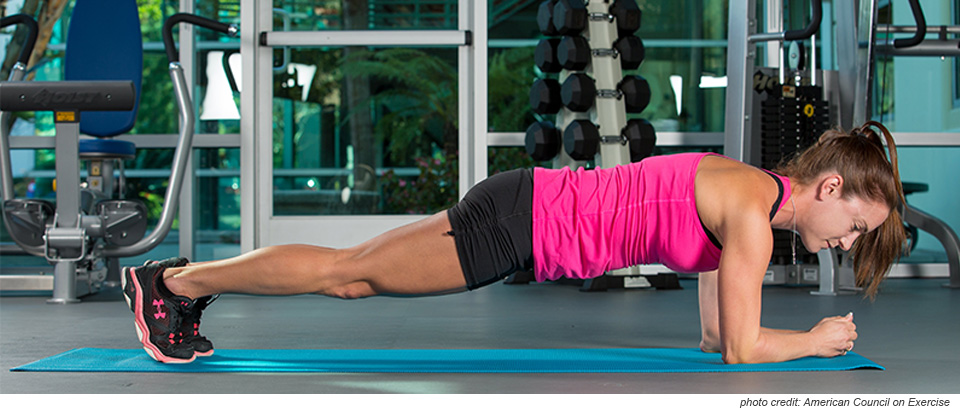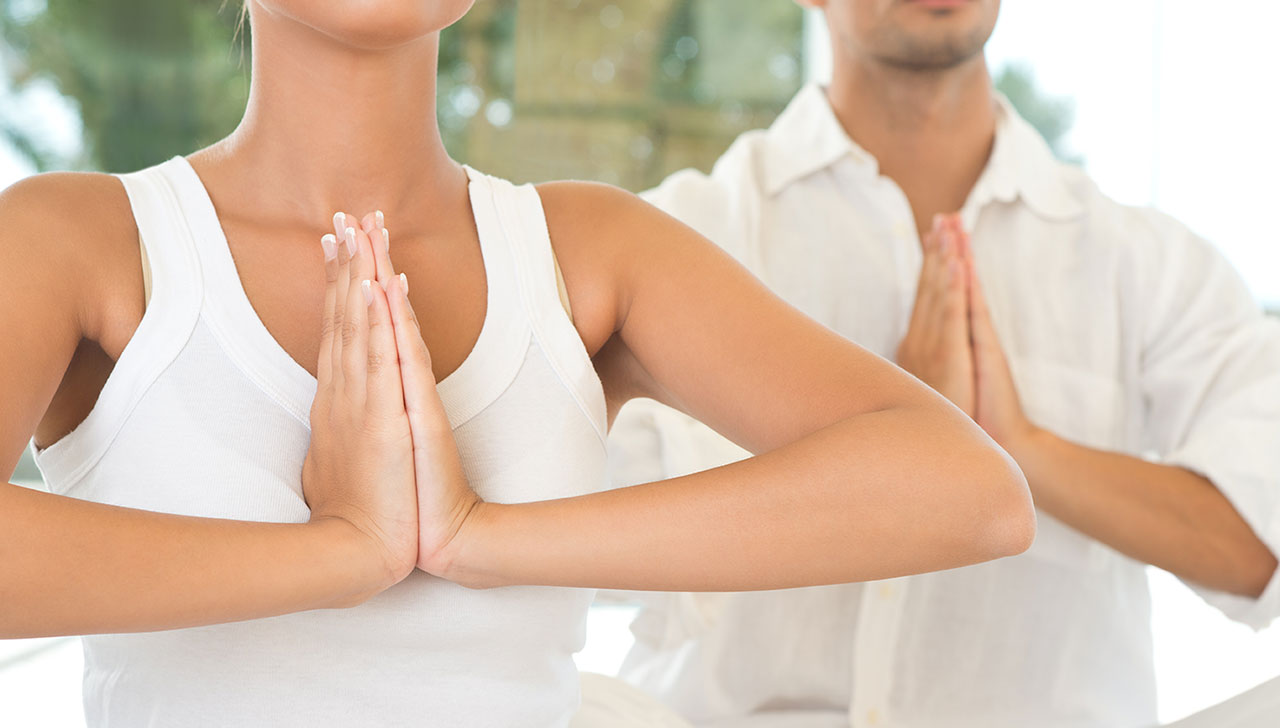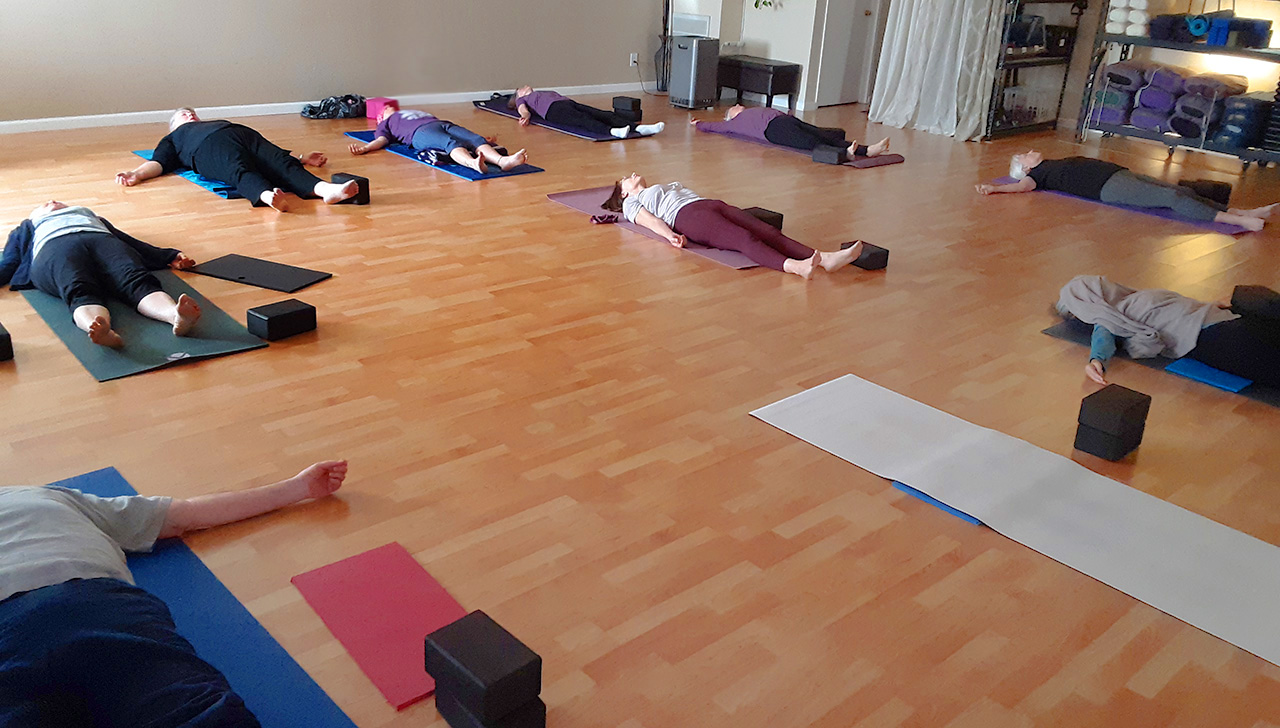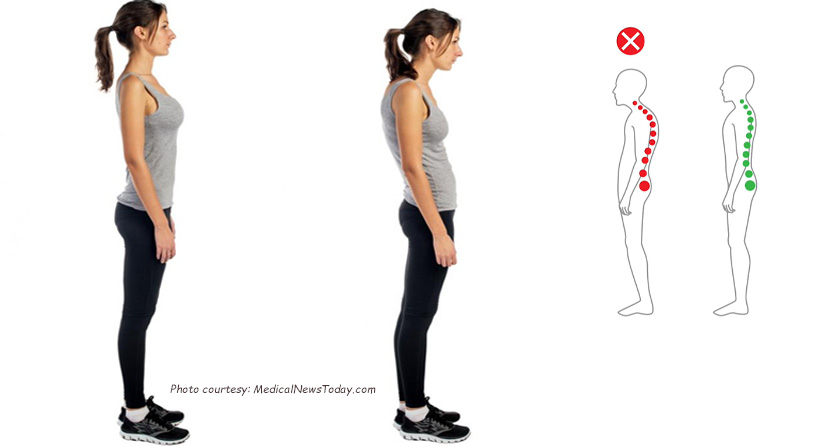How to know if you are doing Forearm Plank correctly and what muscles plank pose works
by Gwenn Jones, CPT
Aug 9, 2022; updated Jan 3, 2024
Any powerhouse in the land of functional exercise is mega-mighty to me, especially when it locks in results. As a certified Functional Training Specialist, I shoot for the most inclusive, best time-sensitive, and high results monster moves.
The Forearm Plank (aka Elbow Plank) looks like a misfit maneuver. On the floor, belly down, DVR ready, jammies swank, popcorn duly staged by dominant hand away from nosy dog.
Nope, this no-wuss-exterminating-tiger trains all your core muscles. From all abdominal muscles (transverse abdominis, rectus abdominis, and external and internal obliques)—to and through the shoulders (deltoids), back, arms, legs, and glutes—this intense and regal move is a lifer!
Engagement of all these stunning muscles in proper plank position improves our posture, protects our internal organs, and stabilizes our spine. The beauty of planks is they can be done anywhere, anytime, are low risk, and no equipment is necessary. Yahoo on that! No excuses.
How to do forearm plank … correctly
Perform on a yoga mat, exercise mat, or your carpet (DVR thriller or comedy?):
- Take an All-Fours position (Hands & Knees); Wrists align directly under your shoulders; Knees directly below your hips
- Lower your elbows down to replace your aligned hand position; forearms planted, hands apart
- Pull your Abs in deep, stiffen your core and extend one leg at a time straight behind, feet flexed hip-width apart, flexed toes on the mat, legs straight (see image below)
- Hands flat and wide, forearms parallel with each other; shoulders broad (do not clasp hands together)
- Image examples below
Focus points for correct form
Pay attention to the proper Plank Technique, it’s everything:
- Head/neck in alignment with the spine (i.e., no head drop)
- Encourage length in the back of neck; eyes look slightly in front of hands; shoulders lowered away from ear lobes (i.e., no shoulder shrug or lifting)
- Draw in your belly tight until the glutes and thighs fully engage (think, tension)
- Keep your back in neutral alignment
- Keep Abs, Glutes, Quads engaged; Feet flexed and perpendicular to the ground
- Keep hips high enough to NOT sag below chest level (square hips should be about level with upper back) as in the image at Left
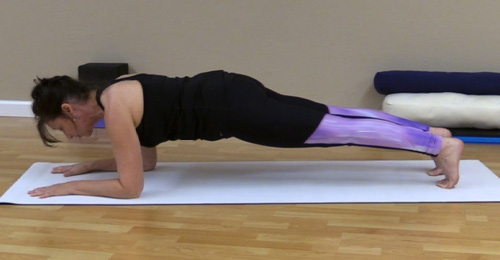
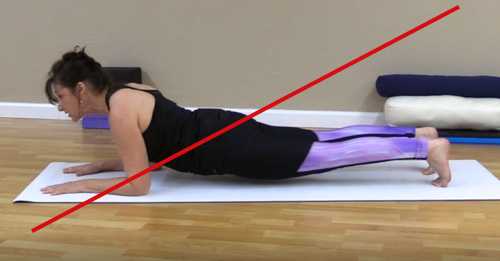
How long should you do a forearm plank?
Hold: as long as possible (15 seconds, 30, 60 – but not to “failure,” only to muscle fatigue). Better yet, count breaths instead. Breathe slowly and consistently (inhale through the nose, exhale softly through the mouth if possible).
Rest and repeat 3-4 times. Planks can be done 3 times per week.
Plank modifications
Less Intensity: Spread flexed feet shoulder-width apart (or wider) for more ease. If you are trembling, lower the knees to your mat, rest, and try again. You will eventually build up to a longer hold, then a straight-leg hold.
More Intensity: Pull flexed feet together for more intensity; tuck your tail a little; lift one foot off the floor keeping the lifted leg straight and active; hips level; pause, and switch to the other leg. We’re really rockin’ hard with this one.
What muscles do forearm planks work?
When done correctly, forearm planks target the core entirety i.e., the transverse (transversus) abdominis, the rectus abdominis, and the internal and external obliques. Plus the upper back shoulders, back, arms, legs, and glutes. Remember, our abdominals support our backs—forever. In particular, the transverse abs which lots of folks remember by the laughing, sneezing, and coughing muscles dominant during these events of forced expiration.
Now ya know…
The forearm plank builds a strong and stable core that assists with daily activities. Plank pose builds balance and coordination for better body function, supports your low back, and strengthens the entire upper body which delivers better posture. Another plus, planks are great feet fortifiers.
Ok, now have a plankin’ good workout and pass the popcorn—buttered!

Article by:
Gwenn Jones, CPT — Content writer in Wellness-Lifestyle-Fitness, Gwenn is a 25-year ACE-certified personal fitness trainer, yoga studio owner, instructor and fitness consultant. Grateful to be a native Californian where happily home-based.
Amber Sayer, August 2022, The Core Benefits of Planking, https://www.livescience.com/plank-exercise-how-the-popular-exercise-changes-your-body
February 9, 2022, 7 Benefits of Plank Exercises, https://gymnation.com/blogs/7-benefits-of-plank-exercises/

